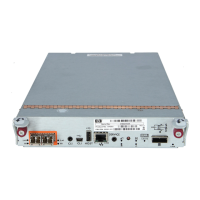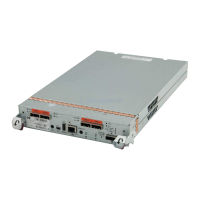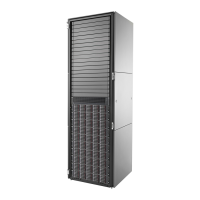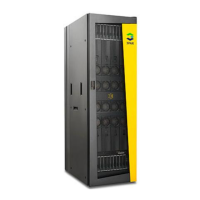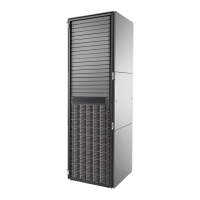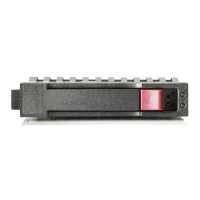Technical white paper | HP P2000 G3 MSA
21
6. Plug in the SAS port of the HBA on the second server into the P2000 G3 SAS MSA controller port. Make sure the server
is powered on.
7. Repeat steps 3–5 for the remaining servers.
Fastest throughput optimization
The following guidelines list the general best practices to follow when configuring your storage system for fastest
throughput:
• Host ports should be configured for 8 Gb/sec on the P2000 G3 FC MSA.
• Host ports should be configured for 1 Gb/sec on the P2000 G3 iSCSI MSA.
• Virtual disks should be balanced between the two controllers.
• Disk drives should be balanced between the two controllers.
• Cache settings should be set to match (Optimizing performance for your application) for the application.
• In order to get the maximum sequential performance from a Vdisk, you should only create one volume per Vdisk.
Otherwise you will introduce randomness into the workload when multiple volumes on the Vdisk are being exercised.
• Distribute the load across as many drives as possible.
Highest fault tolerance optimization
The following guidelines list the general best practices to follow when configuring your storage system for highest fault
tolerance:
• Use dual controllers
• Use two cable connections from each host Use
• Multipath Input/Output (MPIO) software
Boot from storage considerations
When booting from SAN, construct a separate virtual disk and volume that will be used only for the boot from SAN. Do not
keep data and boot from SAN volumes on the same Vdisk. This can help with performance. If there is a lot of I/O going to the
data volume on a Vdisk that shares a boot from SAN volume, there can be a performance drop in the I/O to the Operating
System drives.
Disk Background Scrub, Drive Spin Down, and SMART
The P2000 G3 MSA also uses the disk background scrubbing feature. You can scrub disk drives that are in a Vdisk or have
not yet been assigned to a Vdisk.
The P2000 G3 MSA has now added the power saving feature called drive spin down (DSD). The drive spin down is a cost and
power saving tool. The drive spin down feature will stop virtual disks, available disk drives and global spares disk from
spinning.
Self-Monitoring Analysis and Reporting Technology (SMART) can alert the controller of impending disk failure. When SMART
is enabled, the system checks for SMART events one minute after a restart and every five minutes thereafter. SMART events
are recorded in the event log.
Configuring background scrub for Vdisks
You can enable or disable whether the system continuously analyzes disks in Vdisks to detect, report, and store information
about disk defects.
Vdisk-level errors reported include:
Hard errors, medium errors, and bad block replacements (BBRs).
Disk-level errors reported include:
Metadata read errors, SMART events during scrub, bad blocks during scrub, and new disk defects during scrub.
For RAID 3, 5, 6, and 50, the utility checks all parity blocks to find data-parity mismatches.
For RAID 1 and 10, the utility compares the primary and secondary disks to find data inconsistencies. For NRAID (Non-RAID,
non-striped) and RAID 0, the utility checks for media errors.
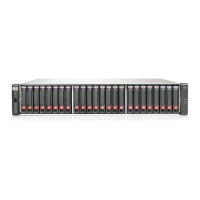
